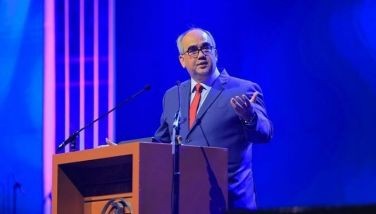Redesign

For good reason, intense controversy broke out over the transfer of unused funds from PhilHealth to the National Treasury. The controversy spurred petitions before the Supreme Court. Oral arguments have been heard by the magistrates and the issue may be resolved either way.
Much of the funds transferred were used for government programs related to health. This includes paying out the much-delayed remuneration for the health workers pressed into the service during the lockdowns.
From the point of view of government, the transfer of unused funds made complete sense. Unused funds benefit no one. It carries the moral hazard of encouraging public agencies to fail in fully utilizing its funds to render service, preferring to sit on a pile of fixed income investments.
Dr. Kenneth Hartigan-Go of the Ateneo Policy Center articulates the core issue in this debate plainly. The real problem is not the reallocation of unused funds. It is the inability of PhilHealth to use the money it has.
This is not really a debate over the morality of transferring unused money. It is a debate over the whether the public good is better served by reallocating funds from an institution that failed to fulfill its mandate or by letting the unused funds lie idle.
I have difficulty imagining that keeping unused funds produces any public good. It only makes a public agency behave like a mediocre financial investor. PhilHealth, after all, is not configured to be an investment house.
All the belly-aching over defunding health services is misplaced. Our creative juices ought to be focused on how PhilHealth may be redesigned to better fulfill its mission. Without such redesign, the same problem of idled funds will happen all over again. This agency, after all, receives funds earmarked from a number of revenue sources, such as the sin taxes.
From the very beginning, PhilHealth was hounded by questions about its institutional capacity to deliver medical insurance to all Filipinos. It has also been tarred by the discovery of a variety of scams that redirect the money to criminal enterprises. With its overspilling war chest, PhilHealth is a natural target for criminal minds.
Poor governance structures and weak controls encouraged corruption in the ranks of PhilHealth employees. Having too much money and a poorly designed institutional format always causes that.
Too much money notwithstanding, PhilHealth is still notoriously delayed in reimbursing hospitals. These are the real frontlines in delivering health care. The delayed payments could bankrupt them.
The decision of our Congress to deny PhilHealth any subsidy this year may be unfortunate. To add to the tragedy, withholding the subsidy was intended to fund the congressional pork barrel – an even more inefficient deployment of taxpayer money.
This policy decision by those who wield power over the purse did not solve the basic problem. To use one of President Marcos’ favorite terms: PhilHealth was “under-designed.” Denying the subsidy does not cure the problem.
Nor is PhilHealth’s chronic institutional weaknesses solved by simply escalating the size of benefit packages. The same inefficiencies will still be there, although the amount of coverage may be larger – and the scams bigger. The agency will still not be able to make universal health care truly “universal.”
Much work still has to be done redesigning PhilHealth’s systems. More digitalization is required. There should be a better way to pay hospitals promptly, for instance, without encouraging leakage.
Health care, after all, is not a favor government gives. It is a social protection that government is mandated to guarantee. The guarantee is only as effective as the efficiency of the institution tasked with delivering it.
It is time to bark up the correct tree.
Cinderella
For a week, Alex Eala brought joy to a nation so starved for it.
In what was described as a “Cinderella Run,” the wildcard entrant brought down a string of champion players to reach the semi-finals of the prestigious Miami Open. Her remarkable, nearly impossible, run captured the attention of the international tennis community.
Yesterday, Alex Eala’s run was finally stopped by a veteran and highly rated American player who lives 15 minutes away from the stadium where the tournament was played. But Alex’s breakout moment had happened. At 19 years old, she is now a world-class tennis player.
Tennis is not much of a spectator sport in this country. It cannot compete for attention against the basketball leagues and, lately, women’s volleyball. But over the past few days, Filipinos gave up sleep to watch her play against the world’s best women’s tennis champions.
Alex Eala is deservedly called a “sensation.” She is the first Filipino female tennis player of note – certainly the first one to make it to the semifinals of a prestigious international tournament.
More than her strong skills, Alex demonstrated a strong heart, the sort champions need to have. In her young life, she has demonstrated the value of discipline and passion to excel in a sport. Her will of steel is concealed by her quiet demeanor and absolute humility.
The world celebrates the entry of a new tennis talent. Filipinos are proud to have a very young athlete with many years of glory ahead.
More important, she educates all of us as an icon of sheer determination, an unyielding commitment to her sport and her capacity for hard work. She spent years perfecting the craft she chose early in life.
- Latest
- Trending




























